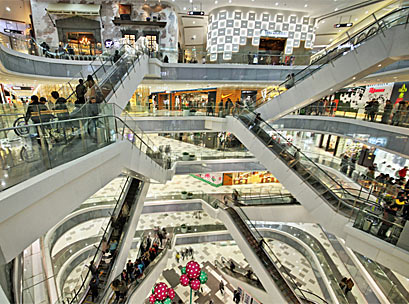As China’s developers join the retail bandwagon, developing new shopping malls in greater numbers, there has been widespread concern of a mall glut in the nation.
But research from Jones Lang LaSalle appears to quash such fears concluding the consumer class will grow faster than the supply of shopping malls in many of the major cities, such as Shenyang, Wuhan, Chongqing, and Zhengzhou. The new supply, says JLL, will be readily absorbed.
“We can compare the retail stock and supply with the size of the consumer class in a given city. In the case of China, consumers with annual income over RMB 30,000 are the main demographic for modern shopping malls,” said Jones Lang LaSalle Research Shanghai local director Steven McCord.
In China, RMB 30,000 per person per annum can serve as an income floor. These are potential mall consumers who typically contribute to shopping mall sales in a significant way. The percentage of the urban population that falls into this consumer class varies widely between different cities in China.
Also, the population of a given city is best defined by the population within its contiguous urban area, which we call “metropolitan population”. This excludes the numerous satellite cities that surround most major urban centers.
“If we combine these two concepts – metropolitan population and size of the consumer class – we can calculate shopping mall provision per metropolitan consumer. The highest-provision cities tend to be provincial capitals serving as regional economic hubs and the key retail centers for their regions.
“A high percentage of provincial GDP is generated in these hub cities, as well as an even higher share of retail sales. With customers gravitating to these hubs from a large area, their concentration of retail will naturally be high. Despite this, Shenyang appears to be the outlier among major cities we cover,” the report says.
Vacancy rate is another important indicator. Among the 20 cities tracked by Jones Lang LaSalle, shopping mall vacancy is highest in Shenyang, Zhengzhou, and Chengdu. This mainly reflects the large percentage of the city’s stock that was recently completed and has had little time to stabilise, rather than weakness in the overall market. Over time, as these malls stabilise, the firm expects the vacancy rate to trend downward.
In many of the major cities, such as Shenyang, Wuhan, Chongqing, and Zhengzhou, the consumer class will actually grow faster than the supply of shopping malls between 2012 and 2015. This means stock per consumer will not increase over this period. Three years from now, the stock per metropolitan consumer will actually be lower in many cities than it is today.
The rise of e-commerce means that more shopping malls will need to emphasise their food and beverage and entertainment options, and reduce floor space dedicated to sectors like electronics, which are seeing the greatest competition from online sales. It also means that shopping malls will need to focus on special fashion offerings that are not easily found online. But the bottom line is that e-commerce and “bricks and mortar” will continue to coexist, and e-commerce will not mean the end of the shopping mall.
McCord concluded that “while the city-level supply and demand balance is an important element, we would not rank it as the foremost factor to a mall’s success.
“More important are the micro factors such as the scheme’s asset management, mall design, positioning relative to its immediate catchment area, tenant mix, and promotional activities.”
Every city will have a few successful shopping malls regardless of the total level of stock in the city, but it will come down to good retail asset management to determine which schemes will succeed. An asset manager well-equipped to put the right tenants in the right location will have a much higher likelihood of success, he says.






